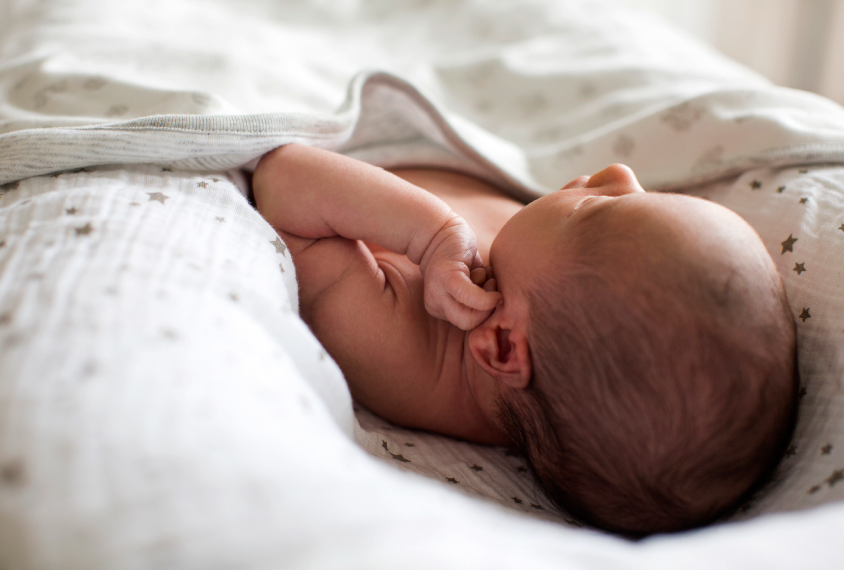A new statistical method that analyzes the brainstem’s response to sounds reveals a series of subtle differences between autistic and non-autistic children, according to a new study.
Auditory brainstem response (ABR) tests are used to assess hearing in all newborns. In these tests, a baby hears a series of brief clicks, each of which initiates a nerve impulse that generates seven electrical peaks as it travels from the ear through the brainstem to the auditory cortex.
Researchers record the peaks using electrodes placed on the baby’s scalp and usually focus on peak V, the largest and easiest to detect. Previous studies have shown that infants who are later diagnosed with autism have a slightly slower response on peak V than non-autistic newborns do.
The new method, by contrast, analyzes the entire ABR response, detects micro-fluctuations in all seven peaks and can pick out larger delays in infants later diagnosed with autism.
“The novelty of the study is that they are taking simple recordings and getting a lot of information out of it, and that has not been done before,” says Randy Kulesza, professor and director of anatomy at Lake Erie College of Osteopathic Medicine in Erie, Pennsylvania, who was not involved in the study.
The technique could one day enable earlier diagnosis of autism or other neurological conditions, says lead investigator Elizabeth Torres, professor of psychology at Rutgers University in Piscataway, New Jersey. That could help clinicians start interventions earlier, she says.
T
he researchers analyzed data from 54 newborns born between 2001 and 2018 and enrolled in studies through the New York State Institute for Basic Research in Developmental Disabilities. Across all seven peaks, the 30 infants who were later diagnosed with autism showed an ABR delay of 1.74 milliseconds compared with non-autistic newborns.“This is a very large delay considering that processes in this region are quantifiable at microsecond timescale,” Torres says.
Another cohort, at the University of Miami in Florida — 65 children aged 1 to 6 years, 18 of whom have autism — showed similar ABR delays in a subsequent analysis, suggesting that the response doesn’t improve with age, Torres says. “Cross-sectionally, we can conclude that these delays continue to persist.”
The findings were published in PNAS Nexus in February.
Autistic newborns also showed individual delays in their auditory responses — variation that suggests a “one-size-fits-all approach to the highly heterogenous spectrum of autism is a mistake, and that we need to subtype autism,” Torres says.
G
oing forward, Torres and her colleagues plan to repeat the analysis in a larger group and to track newborns until they are 4 years old.Children with speech impairments and people with any of a variety of neurological conditions can exhibit ABR delays, says study investigator Rafael Delgado, chairman at Intelligent Hearing Systems in Miami, Florida. Delgado owns stocks in that company, which makes the devices used for data collection in the study.
“Being able to differentiate autism from other neurodevelopmental conditions using the ABR test alone is difficult at this time,” he says. But presenting the sounds to newborns at a faster rate may reveal a larger difference between autistic and non-autistic children, he adds.
For now, the method is far from use as a clinical biomarker, and it’s unlikely that a clinician without special training could use it, says Paul Kileny, professor emeritus of otolaryngology-head and neck surgery at the University of Michigan in Ann Arbor, who was not involved in the work.
“The work is not at that point yet,” he says. “And the cautionary tale here is that you don’t want to mislabel the diagnosis and almost stigmatize an infant.”





